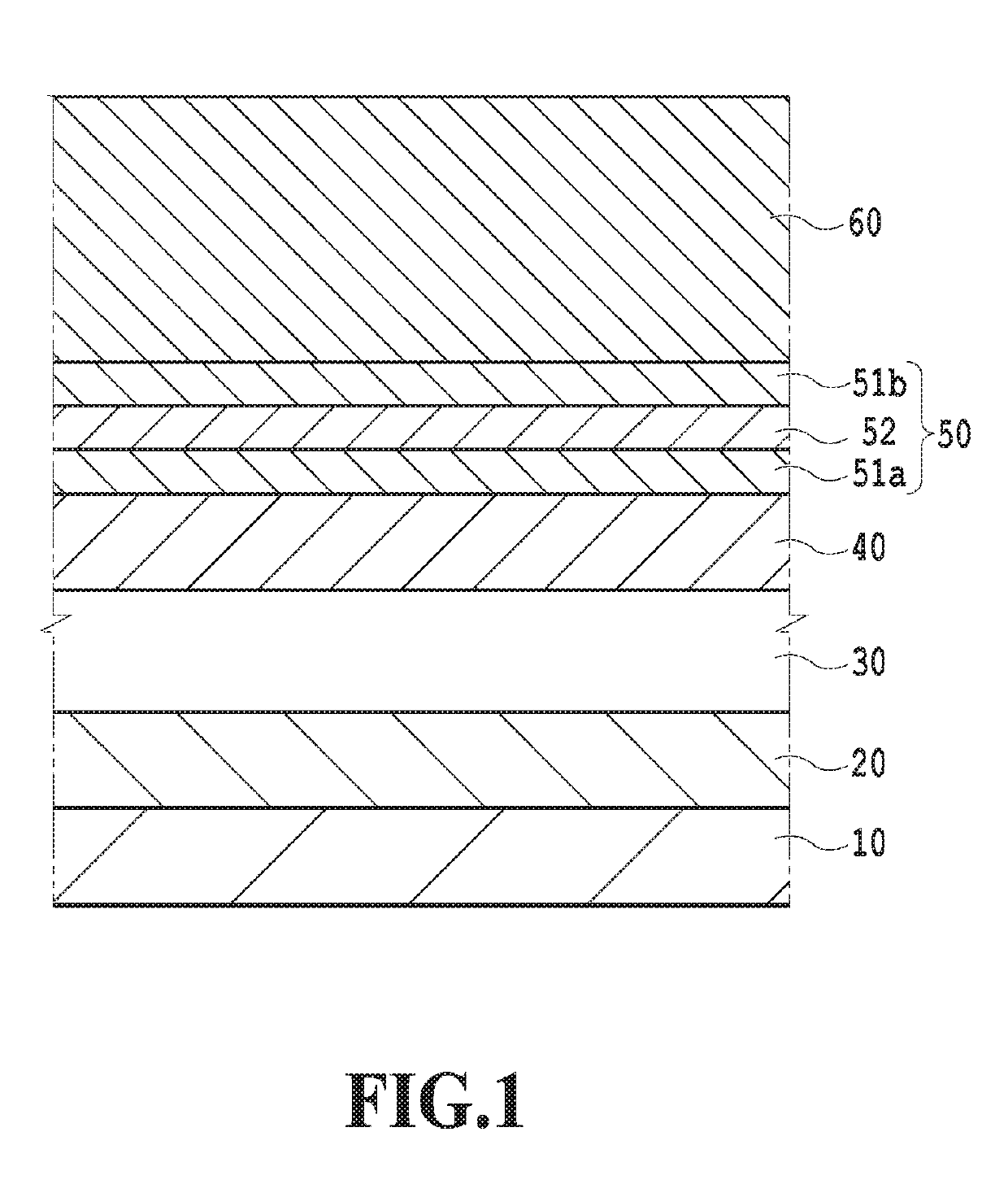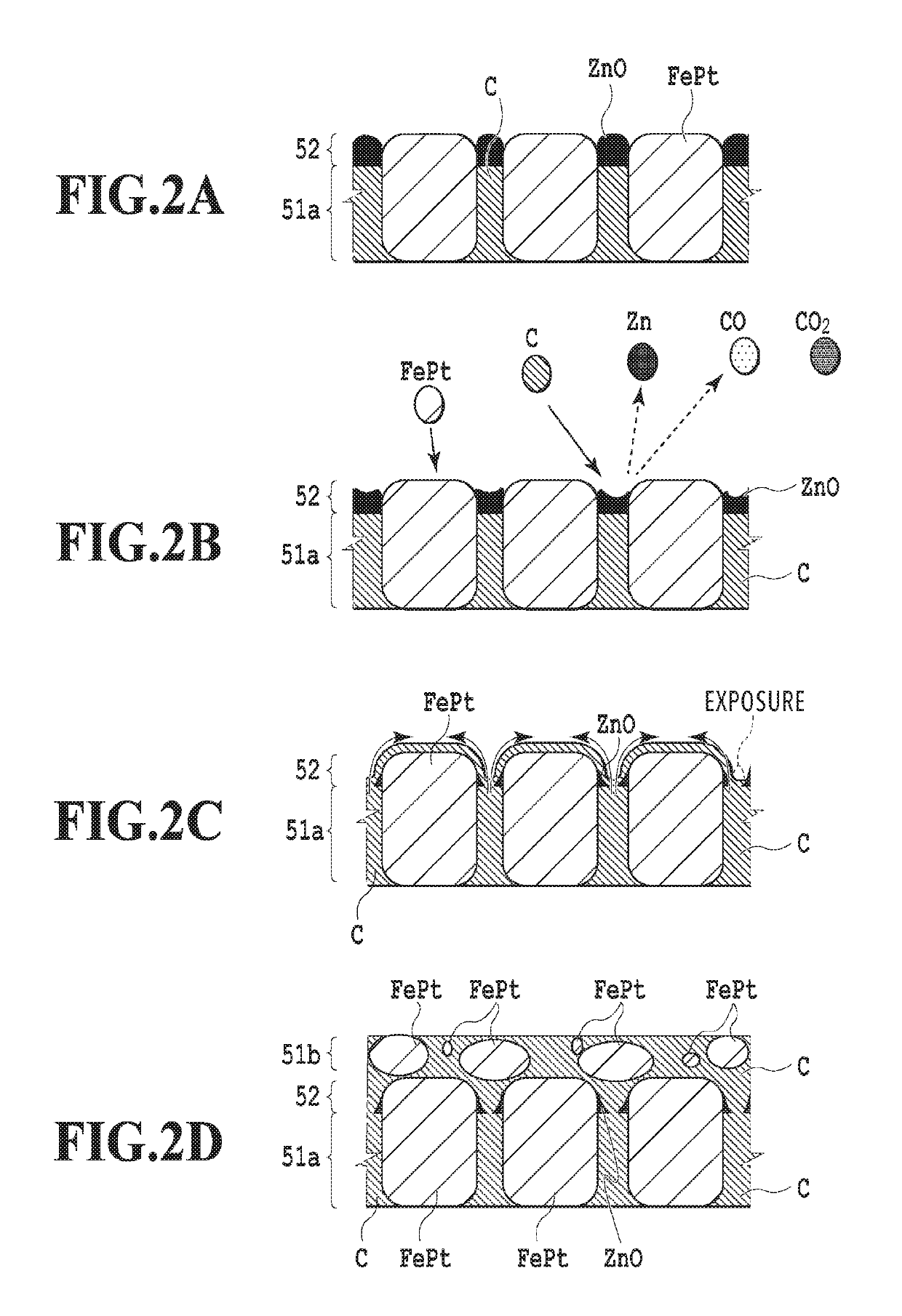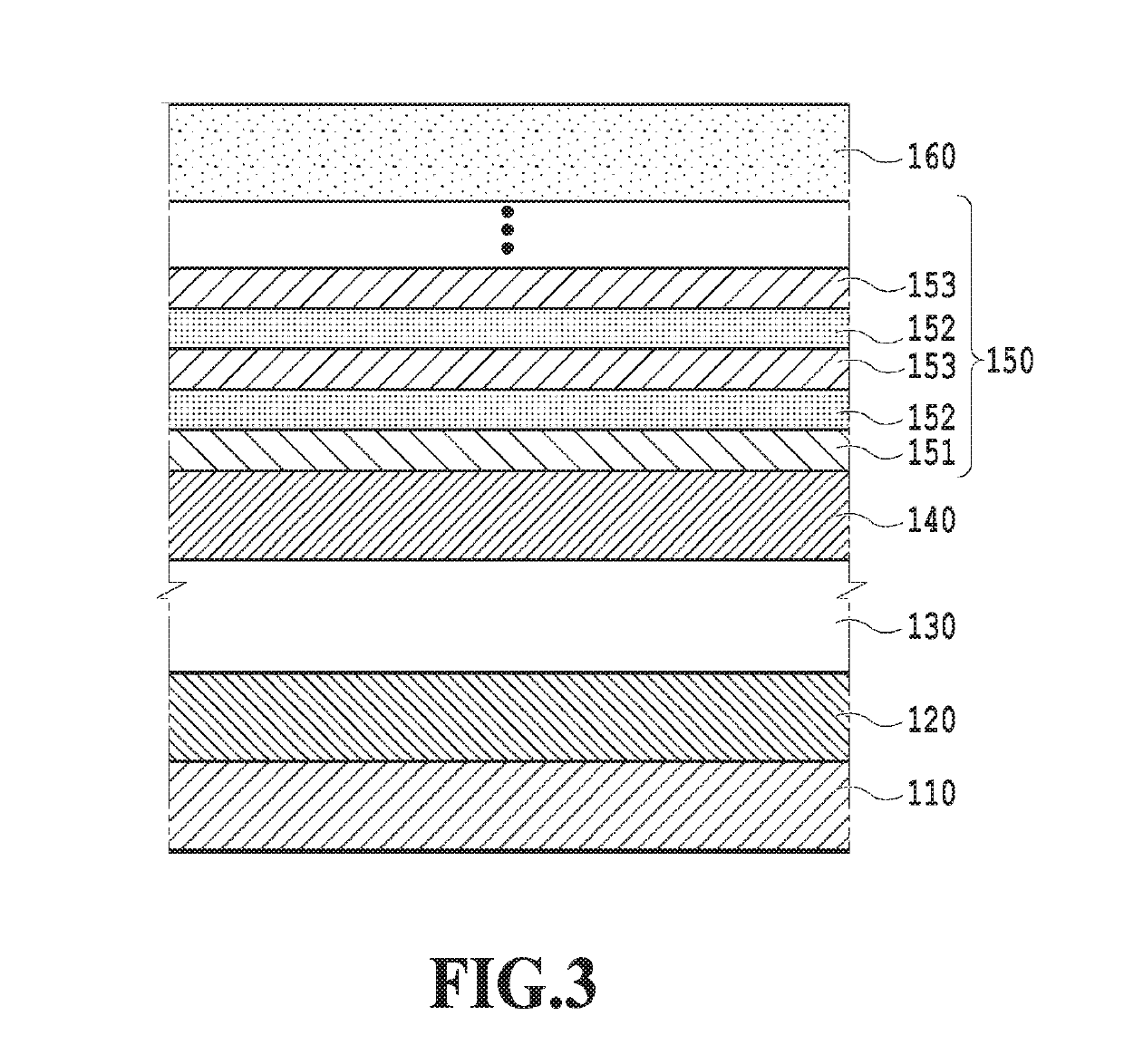Perpendicular magnetic recording medium
a magnetic recording medium and perpendicular technology, applied in the field of magnetic recording mediums, can solve the problems of random crystal growth in random directions, the grain isolation property of magnetic crystal grains decreases,
- Summary
- Abstract
- Description
- Claims
- Application Information
AI Technical Summary
Benefits of technology
Problems solved by technology
Method used
Image
Examples
example 1
[0067]A chemically strengthened glass substrate with a smooth surface (N-10 glass substrate manufactured by Hoya Corporation) was cleaned to prepare the non-magnetic substrate 110. The cleaned non-magnetic substrate 110 was introduced into a sputtering apparatus. A DC magnetron sputtering method using a pure Ta target was performed in an Ar gas at a pressure of 0.3 Pa to form the adhesion layer 120 made of Ta and having a film thickness of 5 nm.
[0068]The laminate in which the adhesion layer 120 was formed was subjected to a RF sputtering method using a MgO target in the Ar gas at a pressure of 0.1 Pa to form the intermediate layer made of MgO and having a film thickness of 1 nm. The applied RF power was 200 W.
[0069]Next, a DC magnetron sputtering method using a pure Cr target was performed in the Ar gas at a pressure of 0.3 Pa to form the underlying layer 130 made of Cr and having a film thickness of 20 nm.
[0070]Then, the substrate was heated to 400° C. and a RF sputtering method us...
example 2
[0077]The adhesion layer 120, the intermediate layer, the underlying layer 130, and the seed layer 140 were sequentially formed over the non-magnetic substrate 110 as in Example 1 described above.
[0078]Next, as in Example 1 described above, the first magnetic recording layer 151 was formed on the laminate in which the seed layer 140 was formed and then the second magnetic recording layer 152 and the third magnetic recording layer 153 described above were formed. Furthermore, alternate stacking of the second magnetic recording layer 152 and the third magnetic recording layer 153 described above were repeated in the same conditions as those in Example 1 described above. Three second magnetic recording layers 152 and three third magnetic recording layers 153 were thereby alternately stacked over the first magnetic recording layer 151 and the magnetic recording layer 150 with a total film thickness of 11 nm was formed.
[0079]Finally, a DC magnetron sputtering method using a Pt target was...
example 3
[0082]The volume ratio x2 / x3 of the volume fraction x2 of the second non-magnetic portion just after the formation to the volume fraction x3 of the third non-magnetic portion and the film thickness ratio t2 / t3 of the film thickness t2 of the second magnetic recording layer 152 to the film thickness t3 of the third magnetic recording layer 153 which are illustrated in FIG. 6 were studied as described below to explain the results obtained by evaluating the state of the crystal grains of the magnetic recording medium and the state of order. First, the method of forming samples with various volume fractions x2, x3 and various film thicknesses t2, t3 is described and then results of evaluating these samples are described.
(Sample Forming)
[0083]First, the adhesion layer 120, the intermediate layer, the underlying layer 130, and the seed layer 140 were sequentially formed over the non-magnetic substrate 110 as in Example 1 described above.
[0084]Then, the magnetic recording layer 150 with th...
PUM
 Login to View More
Login to View More Abstract
Description
Claims
Application Information
 Login to View More
Login to View More - R&D
- Intellectual Property
- Life Sciences
- Materials
- Tech Scout
- Unparalleled Data Quality
- Higher Quality Content
- 60% Fewer Hallucinations
Browse by: Latest US Patents, China's latest patents, Technical Efficacy Thesaurus, Application Domain, Technology Topic, Popular Technical Reports.
© 2025 PatSnap. All rights reserved.Legal|Privacy policy|Modern Slavery Act Transparency Statement|Sitemap|About US| Contact US: help@patsnap.com



